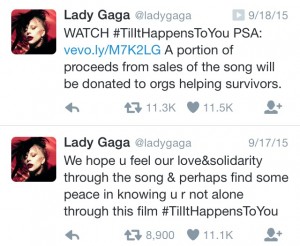By NICOLE HOOD
With the Olympic Games, world news has attracted a new sort of spotlight. Controversy over South Africa’s gold medal winner Oscar Pistorius’ murder trial has brought Africa’s trial system into this spotlight and, subsequently, post-apartheid matters and conflict.
This is, by far, minor news compared to stories of dangerous protests and political meltdowns in Venezuela, Ukraine, Syria and Thailand. World news websites explicitly display videos and pictures of beaten protestors and tortured prisoners in an attempt to show, rather than tell, the horrors that are happening in parts of the world most people don’t ever really think about.
This takeover of news websites by world news gives me hope that the world today — all the people, consumed by day-to-day problems like bad drivers, test grades, piles of paperwork or long lines — will, in the midst of all the current international chaos, take a step back and at least acknowledge what is happening around the world.
Living in the United States, we have advantages that other countries don’t have: geographically, most countries have to cross the sea to get to us militarily; and the U.S. holds more than half of the entire world’s military power, keeping us safe and comfortable. Because of our strength and location, most of the younger generation in the United States do not even glance at the conflicts in European, Middle Eastern and Asian countries. The generation of our parents had to face the Cold War, but, as their children, we have not faced the immediate danger of an impending war and have no idea what the terrors of war could be like.
All of the sudden, though, front pages preview all kinds of internationally based stories: death, violence, and dangerous government reform protests in Ukraine, Venezuela, and Syria, Russia’s ‘declaration of war’ on Ukraine, North Korea’s missile launches, terrorist attacks in China, and radical groups dropping bombs in Nigeria. While not all of these attract the same amount of attention, the complete political meltdowns in Ukraine, Venezuela and Syria have attracted the gaze of those distracted American eyes.
Now, several writers on the Internet are calling on us to pay attention and help, saying that now there are so many conflicts that we cannot ignore them — saying that we have to take a stance on what’s happening. I believe that this is a growing trend and it has incredible potential. The younger generation is picking up on these articles and posting them on Facebook for their friends to notice. These articles call for my generation not only to take a stance but also to be passionate about it — to be passionate about it enough to at least educate others about the problem.
One article mentioned how my generation likes to liken itself to the generation of the 1960s, of Woodstock, peace and “flower power.” While we have our own form of Woodstock, while we carry the same “one love” attitude to these festivals, we are not them by any means. ‘They protested the Vietnam war, led a sexual revolution, fought for women’s rights and civil rights and changed the landscape of America for good.
We watch Netflix a lot and claim to be hipsters, but are okay with our alternative culture to be entirely superficial, free of substance or meaning. But we could be true hipsters, if we tried. There’s a lot that should be upsetting enough for us to integrate actual ideals and principles to our way of life beyond wearing boots in 80-degree weather and listening to music that sounds nothing like music.
I have one thing to say to these writers: preach on. Good luck, because in the midst of chaos, someone should be preaching about the problems that the world is facing. Maybe these articles on the Internet have more power than the writers think they do because they push for peaceful action, for standing up for what we say we do and for, at least, knowledge.
For more information, go to:
http://www.adolescentpress.com/2/post/2014/02/5-things-that-should-piss-every-teenager-off.html

